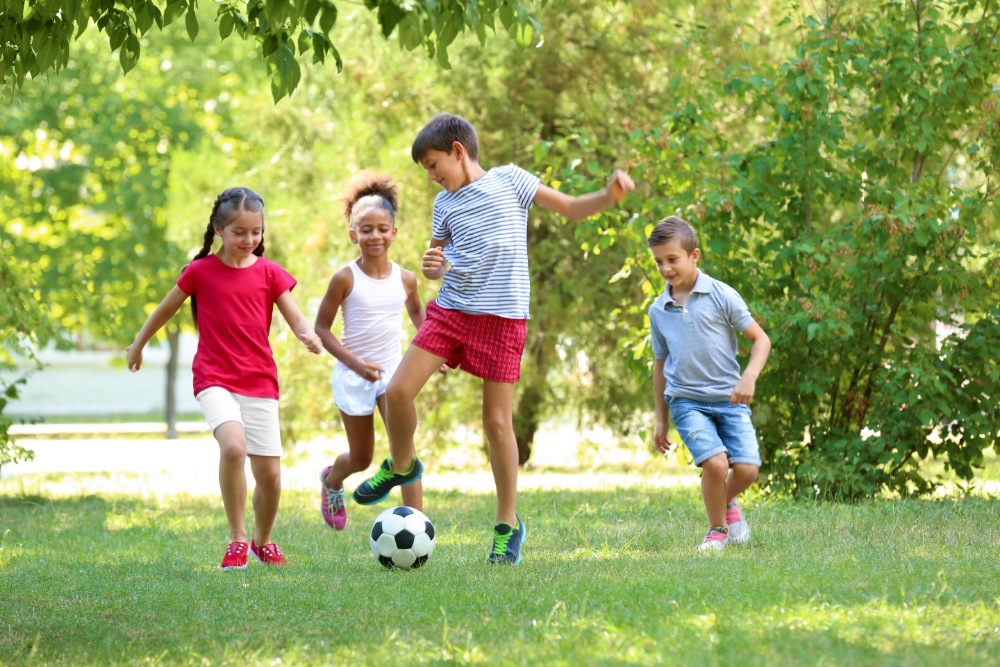Back To School Catch-Up—Shoe Shopping For Kids
It’s hard to believe that kids have been back in school for more than a month now! Although the end of summer and return to structure can be tough for the little ones, hopefully they’ve settled nicely into their academic routines.
And besides, with new sports to play, new academic challenges, and new (and rekindled) friendships, there’s a lot to be excited about!
One thing that your child shouldn’t be experiencing this early in the year? Foot pain. Unfortunately, foot pain isn’t uncommon among youngsters—especially if they’re wearing the wrong shoes!
If your child is complaining about sore feet, it’s very possible that their footwear is partly to blame. So you may need to play a little catch-up on your “back to school” (back in school?) shoe shopping.
Let’s cover some of the basics together.
How Do I Know if My Little One Needs New Shoes?
As adults, it’s pretty obvious when our shoes need to be replaced. Usually, it’s because they smell terrible, or they’re starting to fall apart!
But a child’s feet are still growing—sometimes at a really rapid rate! If your child is going through a growth spurt, it’s very possible he or she will outgrow their shoes long before there are obvious signs of wear—especially if they aren’t being worn every day. Sometimes you might have to run through 3-4 pairs in a single year!
As a parent, make sure you’re testing the fit on your child’s shoes on a regular basis. Set it on the family calendar once per month if you have to!
- Check the length. When your child is standing up straight, push down on the top of the toe box. The longest toe should not be touching the front of the shoe—you should be able to feel a little room to wiggle and grow.
- Check the width. Now feel the sides of the shoes. You shouldn’t notice or feel any bulging along the sides.
Some other signs or situations that might call for a new pair of shoes—or at least an evaluation of the current pair—can include:
- Your child started a new sport. It’s important that kids training in and playing a specific kind of activity wear sport-specific shoes. This will support and protect their feet through the specific movements and challenges posed by that sport.
- Your child is complaining of foot pain. Poor footwear is a very common contributing factor for childhood foot pain (and foot pain in adults, for that matter).
- Your child shows sudden disinterest in physical play. Withdrawing from favorite activities could be evidence of shoe-related foot pain. Remember, kids don’t always tell you when something is wrong.
Shoe Buying Tips for Your Children
Now that you know your child needs a new pair, how do you find the right one?
Do NOT opt for hand-me-downs. The only exception here is if the shoes have really only been worn once or twice before being handed down. Old shoes have already worn down their cushioning, already conformed to a different set of feet, and may be harboring fungi or bacteria.
Do NOT intentionally buy shoes that are too large for your child. We get it—you’re trying to go longer without having to buy another pair. But shoes that are too big can be just as painful and damaging to a child’s feet than shoes that are too small.
ALWAYS take your child shopping with you. It’s important that they participate in the process. You’ll want to make sure they fit and are comfortable to walk in, so your child needs to test them in person.
Go shopping after school, or on weekend evenings. The logic here is that feet usually are just a little swollen at the end of a long day. By testing the fit when feet are at their absolute largest, you reduce the risk of accidentally buying shoes that are already too small.
Bring the right pair of socks. The width of your child’s socks can make a bigger difference than you might think in terms of finding the right fit. If you’re buying athletic shoes, for example, it doesn’t make much sense to try them on with thick wool socks you’d never wear with them in an actual game! Always make sure the socks your child wears when trying on shoes are the same kinds of socks they’ll be wearing with them ordinarily.
Measure their feet first. Remember too that shoes sizes aren’t just about length, but also width. Shoes need to fit in all three dimensions.
… But don’t rely on the measurement alone. Every pair of shoes is just a little bit different. The measurement will give you a good baseline, but each pair should be tested individually for fit and comfort. In addition to the length and width tests we talked about earlier, check the following:
- Test the heel grip. Sit your child down and lift their foot gently, grasping at the ankle. With your other hand, grab the heel and pull down gently. The shoe should grip the heel well, but not too tightly.
- The knuckle test. Try sliding your finger between your child’s heel and the back of the shoe. It should be snug, but you also should be able to get down to the second knuckle without “forcing” it.
- The comfort test. Let your child walk around for a few minutes in the shoes. Although new shoes might feel a little strange no matter what, they should also be comfortable to walk in right from the start.
Follow Up with a Foot Specialist if Pain Persists
Most of the time, the right pair of shoes will go a long way toward relieving any pain or discomfort your child might be having in their feet and ankles.
But if pain persists, please bring them in to see one of the pediatric foot care specialists at Sierra Foot & Ankle. If there are any underlying issues with your child’s gait or the structure of their feet, it is best to address them as early as possible. Plus, we love to work with kids!
Thank you for trusting us with foot care needs for the entire family. To schedule an appointment with us in Carson City, please call (775) 783-8037 today.
Get In Touch
Address
2350 South Carson St
Suite 3
Carson City, NV 89701
Contact
Call: (775) 783-8037
Text: (775) 783-8037
Social




© Sierra Foot & Ankle. All Rights Reserved. Privacy Policy.
Web Design by CP Solutions. Marketed by VMD Services.

